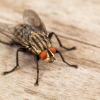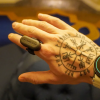Robotics and Systems Design
 Scientists and engineers are modifying animals with mechanical parts to create next-generation biohybrid cyborg animals that can perform difficult and unappealing tasks for humans. But do humans have the right to overlook animal consciousness for personal gain? In this article by Salon, Assistant Professor Nicole Xu blazes this new terrain and explores the ethical considerations behind these biohybrid creatures using her jellyfish case study as an example.
Scientists and engineers are modifying animals with mechanical parts to create next-generation biohybrid cyborg animals that can perform difficult and unappealing tasks for humans. But do humans have the right to overlook animal consciousness for personal gain? In this article by Salon, Assistant Professor Nicole Xu blazes this new terrain and explores the ethical considerations behind these biohybrid creatures using her jellyfish case study as an example. Assistant Professor Kaushik Jayaram is the recipient of a $650,000 CAREER award from the U.S. National Science Foundation. The funding will help Jayaram make advancements in robots by drawing from what might seem to be an unlikely source: insects and other small creatures.
Assistant Professor Kaushik Jayaram is the recipient of a $650,000 CAREER award from the U.S. National Science Foundation. The funding will help Jayaram make advancements in robots by drawing from what might seem to be an unlikely source: insects and other small creatures. Assistant Professor Chahat Singh is pioneering advancements in bio-inspired robotics and resource-constrained AI. His work focuses on developing small, autonomous drones capable of solving global challenges, such as pollinating crops and navigating wildfire zones.
Assistant Professor Chahat Singh is pioneering advancements in bio-inspired robotics and resource-constrained AI. His work focuses on developing small, autonomous drones capable of solving global challenges, such as pollinating crops and navigating wildfire zones. Living organisms have evolved across the span of millions of years to do things that are nearly impossible even for today's machines. But what happens when you combine biology and engineering to create more capable robots? Assistant Professor Nicole Xu shares her lab's efforts to create the next generation of cyborg jellyfish explorers.
Living organisms have evolved across the span of millions of years to do things that are nearly impossible even for today's machines. But what happens when you combine biology and engineering to create more capable robots? Assistant Professor Nicole Xu shares her lab's efforts to create the next generation of cyborg jellyfish explorers. Professor Sean Humbert is being awarded a five-year, $909,000 grant to make robotic advancements in flight physics and aerial systems. How? By unlocking the biological secrets of your common, everyday housefly.
Professor Sean Humbert is being awarded a five-year, $909,000 grant to make robotic advancements in flight physics and aerial systems. How? By unlocking the biological secrets of your common, everyday housefly.- Six years ago, Professor Mark Rentschler helped launch startup company Aspero Medical to develop a medical device used during endoscopy procedures. Today, with the help of a $4.5 million grant through the Anschutz Acceleration Initiative, Rentschler and his team are bringing two new medical devices to the market that have the potential to transform surgeries in the gastrointestinal region even further.
 Watch Jacob Segil, CEO of Afference and research professor in the Paul M. Rady Department of Mechanical Engineering, showcase a new piece of haptic technology in an episode of Freethink's Hard Reset docuseries that will "redraw the borders of reality."
Watch Jacob Segil, CEO of Afference and research professor in the Paul M. Rady Department of Mechanical Engineering, showcase a new piece of haptic technology in an episode of Freethink's Hard Reset docuseries that will "redraw the borders of reality." Research Professor Jacob Segil is also the CEO of Boulder startup Afference. The company traveled to Las Vegas for this year's Consumer Electronics Show (CES) to showcase what's being called "the new frontier" of spatial computing: a neural haptic ring that allows users to feel something even when touching nothing.
Research Professor Jacob Segil is also the CEO of Boulder startup Afference. The company traveled to Las Vegas for this year's Consumer Electronics Show (CES) to showcase what's being called "the new frontier" of spatial computing: a neural haptic ring that allows users to feel something even when touching nothing.- Sean Humbert, professor in mechanical engineering and director of the Robotics graduate program, chats with CBS News Colorado about some of the technology him and his students are working on at CU Boulder. One of their builds is a robot that the Boulder County Sheriff's Office uses to support their bomb squad team.
 One thousand feet underground, a four-legged creature scavenges through tunnels in pitch darkness. With vision that cuts through the blackness, it explores a spider web of paths, remembering its every step and navigating with precision. The sound of
One thousand feet underground, a four-legged creature scavenges through tunnels in pitch darkness. With vision that cuts through the blackness, it explores a spider web of paths, remembering its every step and navigating with precision. The sound of

